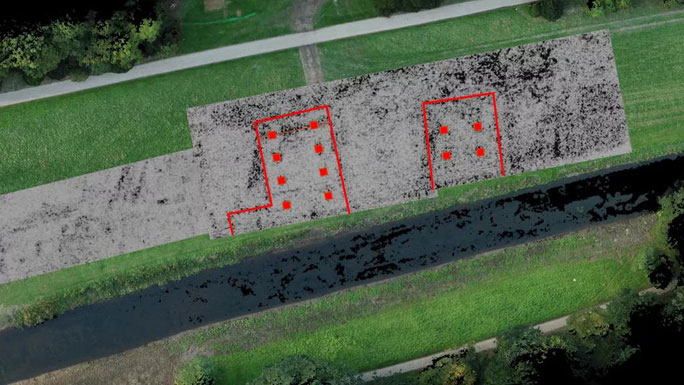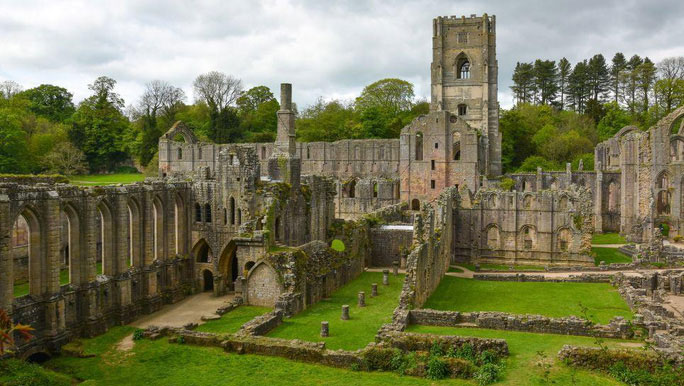Ground-penetrating radar reveals 'bowling court' under millennial monastery
A structure resembling a bowling alley appeared in the ground-penetrating radar image when surveying the Fountais Monastery in Yorshire (England) that stunned scientists. But new research shows it's not as timeless as initially suspected.
Since being discovered via ground-penetrating radar images during the 2014 survey, the modern bowling alley-like structure has become a big deal for archaeologists. In new research led by archaeologist Chris Gaffney from the University of Bradford (UK), the mystery has been revealed.

The mysterious structure is mistaken for a bowling alley - (Image: Bradford University).
It wasn't a bowling alley, there's no way the Medieval people here had a timeless hobby. But what's really underneath the monastery is even more precious: the ruins of an ancient factory.
According to Live Science, using a more thorough ground-penetrating radar, combined with the medieval records that the research team worked hard to collect, the mysterious site is an ancient tannery , where . manufactures clothing, furniture, bedding, book bindings, and parchment that the monastic scribes used to copy religious texts.
The tanneries appear to have fallen out of use in the later part of the monastery's history. The evidence suggests it was burned down and buried. As excavation of this workshop could damage the beautiful remains of the monastery above, the archaeologists decided to keep it underground and continue to map it with non-invasive tools to show with paper and 3D models of the mysterious things below and around the monument.

Beautiful ruins of the monastery - (Photo: Dave Carroll).
It is estimated that this tannery consists of two large stone buildings, one of which is up to 30 meters long and has a floor, with many surrounding substructures.
Fountains Abbey itself was founded in AD 1132 and flourished for at least 400 years. After King Henry VII dissolved the monasteries, a British heritage institution owned it, but much of the stone, wood and lead from the architectural wonder was removed and sold as building materials. Now the monastery is just a dilapidated building, but still remarkably beautiful and a famous monument in England.
- Video: Overcome with the ability to play Bowling backwards
- Using radar to sweep through the ground, discover an ancient Roman city
- Discover the lost Spanish fortress on the island of Florida
- 10 jobs are extinct
- Millennial will be the first generation to have a worse age than parents
- Radar is unique in the world of Russia
- Radar in the backpack
- Russian radar can detect metal balls from 2,000km
- The skeptical expert went to the secret room hidden in King Tut's tomb
- Why is Russian radar blind?
- People have 'god eyes' looking through the ground
- China declared a successful patent for a new radar that could 'catch' the F-35
 Discovered an ancient centipede fossil 99 million years old
Discovered an ancient centipede fossil 99 million years old Discovered bat-like dinosaurs in China
Discovered bat-like dinosaurs in China Discovered a 200-year-old bronze cannon of the coast
Discovered a 200-year-old bronze cannon of the coast Discover 305 million-year-old spider fossils
Discover 305 million-year-old spider fossils